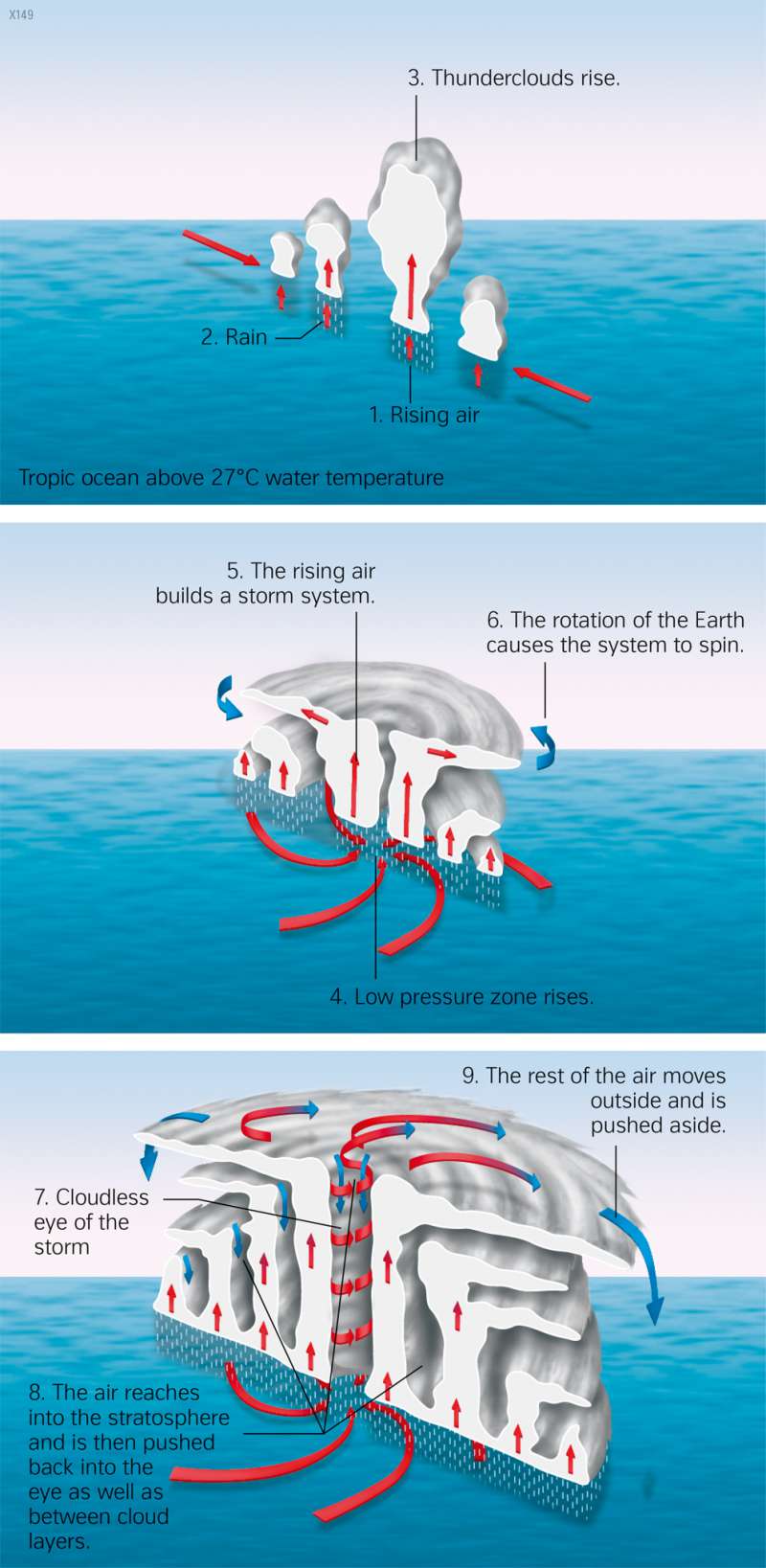The Americas - Formation of a hurricane
Climate
978-3-14-100890-6 | Page 173 | Ill. 5

Overview
Every year there are between 30 to 100 tropical cyclones worldwide. These are known as hurricanes in the Caribbean, typhoons in the Indonesian area and “Willy Willies†in the regions of Australia. Hurricanes mainly occur from June to November.
How tropical cyclones form over the sea
Tropical cyclones can only develop over seas with water temperatures of at least 26-28 °C. The store of these water bodies and subsequent unstable, humid air masses rise with the influence of the Intertropical Convergence Zone (ITCZ) and form huge, towering clouds, so-called "cloud clusters". The rise of warm air creates low pressure on the ground which attracts warm, moist air masses from all sides that permanently feed the vortex. Towering above the clouds, the air is thrown outward, where it sinks back to the ground. This creates a constant air circulation. The condensation in the rising air parcels and the released energy gives the air an extra boost and creates the power source of the characteristic turbulence. It is not until the onset of rotational motion of air masses that a tropical cyclone can be created. The Coriolis force keeps this circulation moving. Since this deflecting force is large enough to initiate a vortex formation, through the Earth's rotation, approximately as far as the sixth to eighth poleward latitudes, it straddles the cyclone free zone of the equator.
Wind circulation and path
Hurricanes can have a diameter of several 100 kilometres. The winds circulate clockwise around the centre of the hurricane opposition and carry humid, tropical air masses northwards on its eastern side. On its western side, cold air is transported towards the south.
The centre of the hurricane increases toward the pressure gradient. Very high wind speeds of more than 300 kilometres per hour can occur. However, there is almost no wind in the "eye of the storm", a 10–30 km wide zone in the core of the hurricane. This area is largely cloudless because of the descending air masses. Rings around the "eye" are air masses uplifted high into the air. These form powerful towering clouds (cumulonimbus), which descend in the form of torrential rain and thunderstorms.
Caribbean hurricanes usually move northwards in a clockwise direction along the western flank of the North Atlantic. Due to falling water temperatures, the cyclones then weaken, particularly when reaching the mainland. Coastal hurricanes often cause terrible damage. The extremely high winds and torrential rains can be accompanied by huge tidal waves. The storm churns up the sea water into high waves that can penetrate far inland and cause massive destruction and flooding.
To circumscribe the strength of these hurricanes, the five-stage Saffir-Simpson scale was developed, which begins where the Beaufort scale ends: at 118 kilometres per hour. Category 1 includes wind speeds of 118 to 153 kilometres per hour, which already damages many houses. Category 2 has wind speeds of up to 177 kilometres per hour, and category 3 includes winds with speeds up to 209 kilometres per hour. A category 4 hurricane with winds of up to 249 kilometres per hour destroys many buildings, uproots trees, and floods land close to the coast. A category 5 hurricane with winds of 250 kilometres per hour or more destroys houses and bridges, washes ships far inland and causes widespread flooding.




